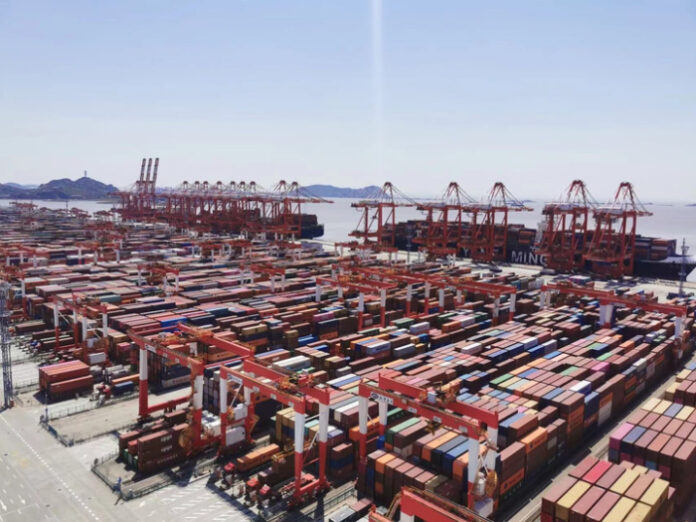
-
Forecast throughput of 48.4 million TEUs will rank the Shanghai gateway as No.1 in the world by the end of this year, according to Center for Forecasting Science
-
Ningbo Zhoushan, Qingdao and Tianjin will also be among the top 20, the center predicts
-
China’s ports global rankings are supported by its strong foreign trade, with imports and exports growing 9.4% y-o-y in the first half despite the impact of COVID-19 lockdowns
Nine of the world’s top 20 container ports by the end of this year will be Chinese, with the Shanghai gateway expected to log the most throughput of about 48 million TEUs, according to a report released by the Chinese Academy of Sciences (CAS).
The China Science Daily quoted the report as saying most of China’s container ports are seeing growing demand for shipping services, including the Ningbo-Zhoushan port, as well as ports in Qingdao and Tianjin.
The report, “Outlook of Global Top 20 Container Ports,” was released by the Center for Forecasting Science on July 12.
Compared with regression analyses and econometric models, the researchers regarded the global ports as a whole system, taking into account the global economy, trade situations, and shipping industry development, said Wang Shouyang, director of the CAS’ Center for Forecasting Science.
Shanghai is forecast to have a container throughput of up to 48.2 million twenty-foot equivalent units (TEUs) this year, up 2.5% from 2021. Although its overall container volume will drop due to COVID-19 lockdowns this year, the port’s average daily operating volume will remain above 100,000 TEUs, the report said.
Ningbo-Zhoushan Port, forecast to rank third, should see its total container throughput rebound rapidly, likely reaching 33.4 million TEUs this year, a 7.5% increase from 2021, the report said.
With the global economy facing downward pressure from the impact of the COVID-19 pandemic and the Russian war on Ukraine, the growth rate of total container throughput this year may be slower than last year, the report added.
The transportation quantity of containers is affected by many factors, said the report. China’s container transportation remains as a foundation for the stable global development, CAS professor Xie Gang was quoted as saying.
Demand for logistics services in most container ports in China is showing a growth trend buoyed by trade demand, especially at Ningbo-Zhoushan Port in Zhejiang province, Qingdao Port in Shandong province and Tianjin Port.
The report forecast that China will continue to play an important role in the stable development of the world’s container ports and logistics.
“Ports are an important part of international logistics and play a vital role in global trade. China is the world’s largest manufacturer as well as the biggest country for trade in goods. The country’s huge trading activity creates great demand for container ports,” said Xie.
China’s imports and exports increased 9.4% y-o-y in the first half of 2022 to 19.8 trillion yuan (US$2.94 trillion), according to the General Administration of Customs’ latest data released on July 13.
Exports came in at 11.14 trillion yuan, surging 13.2% y-o-y, while imports were valued at 8.66 trillion yuan, growing 4.8% y-o-y. In June, China’s foreign trade rose 14.3% y-o-y.
“China has a relatively high-quality labor force, a complete industrial layout, a well-developed supply chain, convenient infrastructure, and agglomeration centers with greater competition in the product and labor markets,” Xie said.
“All of (these) enable the country to maintain its position as a top manufacturing center as well as the largest country in goods trade, and lead the world in container port development.”




